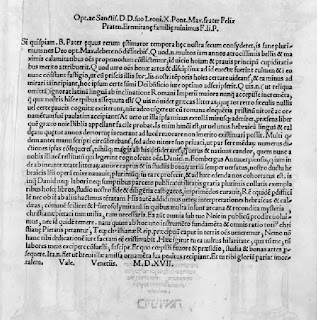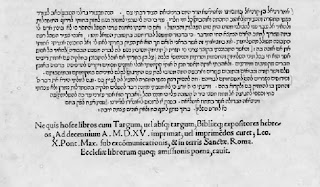The “Holy Woman” in Jewish Literature
Of late, much has been made of high governmental officials and their use of prostitutes. A striking parrall can be found in the writings of R. Yaakov Emden. R. Emden records that one of the parnasim, a representative of the Altona Jewish community, who went to Copenhagen for the inauguration of the king [Frederick III?] on behalf of the Altona Jews. While he was there, he squandered “thousands” from the community funds to engage prostitutes. Similarly, R. Emden relates that in Hamburg in 1764, after Kol Nidrei, a non-Jewish woman made a scene in shul claiming that her three children’s father was a Jew, and that he should take the children and support them.
Prostitution, much like today, appears to be a fascination of the public. It appears this is not a new phenomenon, instead, R. Hayyim Yosef David Azulai, in his travelogue Ma’agel Tov, records his impressions of Paris when he was there in 1777. [The Hida really liked Paris, and although this was not his first visit there, he still provides many interesting details.] He states:
Paris is a huge city, some 15 miles wide, with wide streets so wide that two carriages can pass each other even with people hanging on the sides, and the Seine river flows through Paris and that is where Parisians get their water. There is a bridge, the Pont Neuf, and this bridge is so busy that day or night there are always people on it . . . In fact the saying goes at any hour one can find on the Pont Neuf a white horse, a priest, and prostitute. The city of Paris is beautiful and one can find everything there, however, it is all expensive, the one exception being prostitutes – and it is known that there are 30,000 prostitutes that are available for anyone. That number does not include the thousands that are specialized for particular persons.
Throughout the middle ages, in the Iberian peninsula, there was a debate whether having prostitutes available was better on the whole. Two rationales were offered as a justification for prostitution. The first, that if people use prostitutes they won’t fall prey to adultery, a much more serious sin. And second, that there was in various times and places laws that punished by death Jewish and non-Jewish intercourse. Without Jewish prostitutes, Jews may violate that prohibition and be subject to death – typically burning. Thus, having Jewish prostitutes was allowed for the very pragmatic reason as a balance of harms, or the greater good, that is, it avoided these two other negative outcomes.
R. Yitzhak Arama famously decried these justifications. In explaining the sin of the people of Sedom, he put forth the notion that although individuals may sin, any time a community sanctions sins, that creates a much more serious communal crime. And that, he says, was why Sodom was unique in being utterly destroyed although there were numerous other instances of serious sin throughout Tanach that did not suffer the fate of Sodom. R. Armama then continues and applies the explanation for the destruction Sodom to his own times. He explains that for this reason he fought against those communities that sanctioned prostitution. While it may be correct that there is some way to justify prostitution, a community can never sanction illegal behavior. He offered that the ramifications of not having prostitutes was not to be considered, in no way could a community allow for such behavior. [This holding of R. Arama is used by many in many varied instances, see R. Ovadiah Yosef, Yabeah Omer, Orach Hayyim vol. 1, no. 30:15).]
R. Yitzhak ben Sheshet Perfet (Rivash) speaks of the “Gedoli Ha-Dor” who used the very rationale rejected by R. Arama to justify prostitution:
“The Gedolei Ha-Dor averted their eyes [from Jewish prostitution] based on the rationale that if we do not allow the sinners to utilize prostitutes they will sin with non-Jews and they will be subject to burning.”
Similarly, R. Yehuda ben Ha-Rosh received a similar query in that he was asked whether the position “of some people who say that they should force the prostitutes out of the Jewish area as they are in violation of the prohibition against kadasha and further they do not go to the mikveh thus causing people to be punished with karet, however, there are those who say that it is better to have the prostitutes remain in the city so that Jews will not resort to going to non-Jews thereby putting their lives in danger.” R. Yehuda responded, like R. Arama, that “the law does not follow ‘those who say’ and they should remove the prostitutes. A Latin document records a troubling incident from 1404 where, “a German speaking Jew visited a non-Jewish prostitute on Shabbat and he refused to pay her, he explained that he could not pay her as it would violate the Shabbat.”
Skipping ahead a few years to 1675, we come to the Takkanot of Frankfurt which states “that one is required to remove the prostitutes within six month from the Jewish area . . . And they cannot remain even as servants, even if they are kept for free. But, if the householder is willing to pay a two Reichthaller a week fine, then they can be kept, however, should they miss even a week’s payment then they must leave.” In Fuerth, a law was required to be enacted that single mothers could not circumcise their sons in the shul.
Finally, we turn to R. Yechezkel Landau, author of Shu”t Noda B’Yehuda, and although he is not discussing prostitution in general, but it is worthwhile to mention a specific case of Havah Bernstein, wife of the Chief Rabbi of Brody, R. Areyeh Leib Bernstein. According to the testimony of two people (and perhaps others), Havah was accused of acting as a prostitute. After this testimony came to light there was a celebrated controversy regarding the status of this woman vis-a-vis her husband. It appears, due to the Chief Rabbi’s powerful secular connections he was able to shut down any discussion about his wife (although there are several responsa on the topic). And specifically, there was a decree that anyone who called the Chief Rabbi’s wife a prostitute would be subject to a fine of 100 adumim for each statement to that effect. So, R. Landau showed up to court and made the following announcement:
“Everyone should know that the wife of the Chief Rabbi is a prostitute and there is a fine, 100 adumim for each utterace that she is a prostitute, and you should also all know that if I had more money I would call her a prostitute again, however I currently do not have the money I will have to satisfy myself with the fact that I have already called her a prostitute.”
Thus, R. Landau was able to call her a prostitute four times for the price of one. (Mofes Ha-Dor p. 9).
Sources: For the medieval sources see Grossman, Hassidut U-Morodot Jerusalem, 2003), 229-56 (see also where Grossman cites to those who question the truth of the Latin account and discusses other areas during the medieval period); R. Arama, Akedat Yitzhak, parshat Veyerah, Gate 20; Hida, Maagel Tov, p. 120; for the 16th and 17th sources, including R. Emden, see Azreil Shohet, Im Halufei Tekufot (Jerusalem, 1960), 166-73. For more on the Havah Bernstein incident, see David Katz, “A Case Study in the Formation of a Super-Rabbi: The Early Years of Rabbi Ezekiel Landau, 1713-1754,” (PhD dissertation, University of Maryland, 2004), 228-51; and Matthias Lehmann, “Levantinos and Other Jews: Reading H. Y. D. Azulai’s Travel Diary,” Jewish Social Studies 13:3 (Spring/Summer 2007): 1-34.


